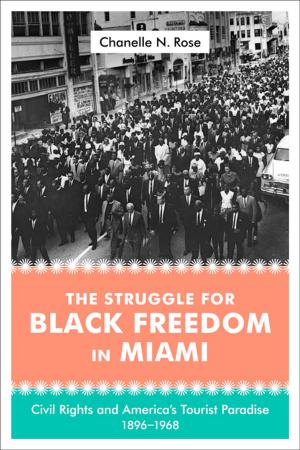New Orleans on Parade
Tourism and the Transformation of the Crescent City
Nonfiction, Travel, United States, South, Social & Cultural Studies, Social Science, Sociology, Urban, History, Americas| Author: | J. Mark Souther | ISBN: | 9780807154434 |
| Publisher: | LSU Press | Publication: | October 7, 2013 |
| Imprint: | LSU Press | Language: | English |
| Author: | J. Mark Souther |
| ISBN: | 9780807154434 |
| Publisher: | LSU Press |
| Publication: | October 7, 2013 |
| Imprint: | LSU Press |
| Language: | English |
New Orleans on Parade tells the story of the Big Easy in the twentieth century. In this urban biography, J. Mark Souther explores the Crescent City's architecture, music, food and alcohol, folklore and spiritualism, Mardi Gras festivities, and illicit sex commerce in revealing how New Orleans became a city that parades itself to visitors and residents alike.Stagnant between the Civil War and World War II -- a period of great expansion nationally -- New Orleans unintentionally preserved its distinctive physical appearance and culture. Though business, civic, and government leaders tried to pursue conventional modernization in the 1940s, competition from other Sunbelt cities as well as a national economic shift from production to consumption gradually led them to seize on tourism as the growth engine for future prosperity, giving rise to a veritable gumbo of sensory attractions. A trend in historic preservation and the influence of outsiders helped fan this newfound identity, and the city's residents learned to embrace rather than disdain their past.A growing reliance on the tourist trade fundamentally affected social relations in New Orleans. African Americans were cast as actors who shaped the culture that made tourism possible while at the same time they were exploited by the local power structure. As black leaders' influence increased, the white elite attempted to keep its traditions -- including racial inequality -- intact, and race and class issues often lay at the heart of controversies over progress. Once the most tolerant diverse city in the South and the nation, New Orleans came to lag behind the rest of the country in pursuing racial equity.Souther traces the ascendancy of tourism in New Orleans through the final decades of the twentieth century and beyond, examining the 1984 World's Fair, the collapse of Louisiana's oil industry in the eighties, and the devastating blow dealt by Hurricane Katrina in 2005. Narrated in a lively style and resting on a bedrock of research, New Orleans on Parade is a landmark book that allows readers to fully understand the image-making of the Big Easy.
New Orleans on Parade tells the story of the Big Easy in the twentieth century. In this urban biography, J. Mark Souther explores the Crescent City's architecture, music, food and alcohol, folklore and spiritualism, Mardi Gras festivities, and illicit sex commerce in revealing how New Orleans became a city that parades itself to visitors and residents alike.Stagnant between the Civil War and World War II -- a period of great expansion nationally -- New Orleans unintentionally preserved its distinctive physical appearance and culture. Though business, civic, and government leaders tried to pursue conventional modernization in the 1940s, competition from other Sunbelt cities as well as a national economic shift from production to consumption gradually led them to seize on tourism as the growth engine for future prosperity, giving rise to a veritable gumbo of sensory attractions. A trend in historic preservation and the influence of outsiders helped fan this newfound identity, and the city's residents learned to embrace rather than disdain their past.A growing reliance on the tourist trade fundamentally affected social relations in New Orleans. African Americans were cast as actors who shaped the culture that made tourism possible while at the same time they were exploited by the local power structure. As black leaders' influence increased, the white elite attempted to keep its traditions -- including racial inequality -- intact, and race and class issues often lay at the heart of controversies over progress. Once the most tolerant diverse city in the South and the nation, New Orleans came to lag behind the rest of the country in pursuing racial equity.Souther traces the ascendancy of tourism in New Orleans through the final decades of the twentieth century and beyond, examining the 1984 World's Fair, the collapse of Louisiana's oil industry in the eighties, and the devastating blow dealt by Hurricane Katrina in 2005. Narrated in a lively style and resting on a bedrock of research, New Orleans on Parade is a landmark book that allows readers to fully understand the image-making of the Big Easy.















